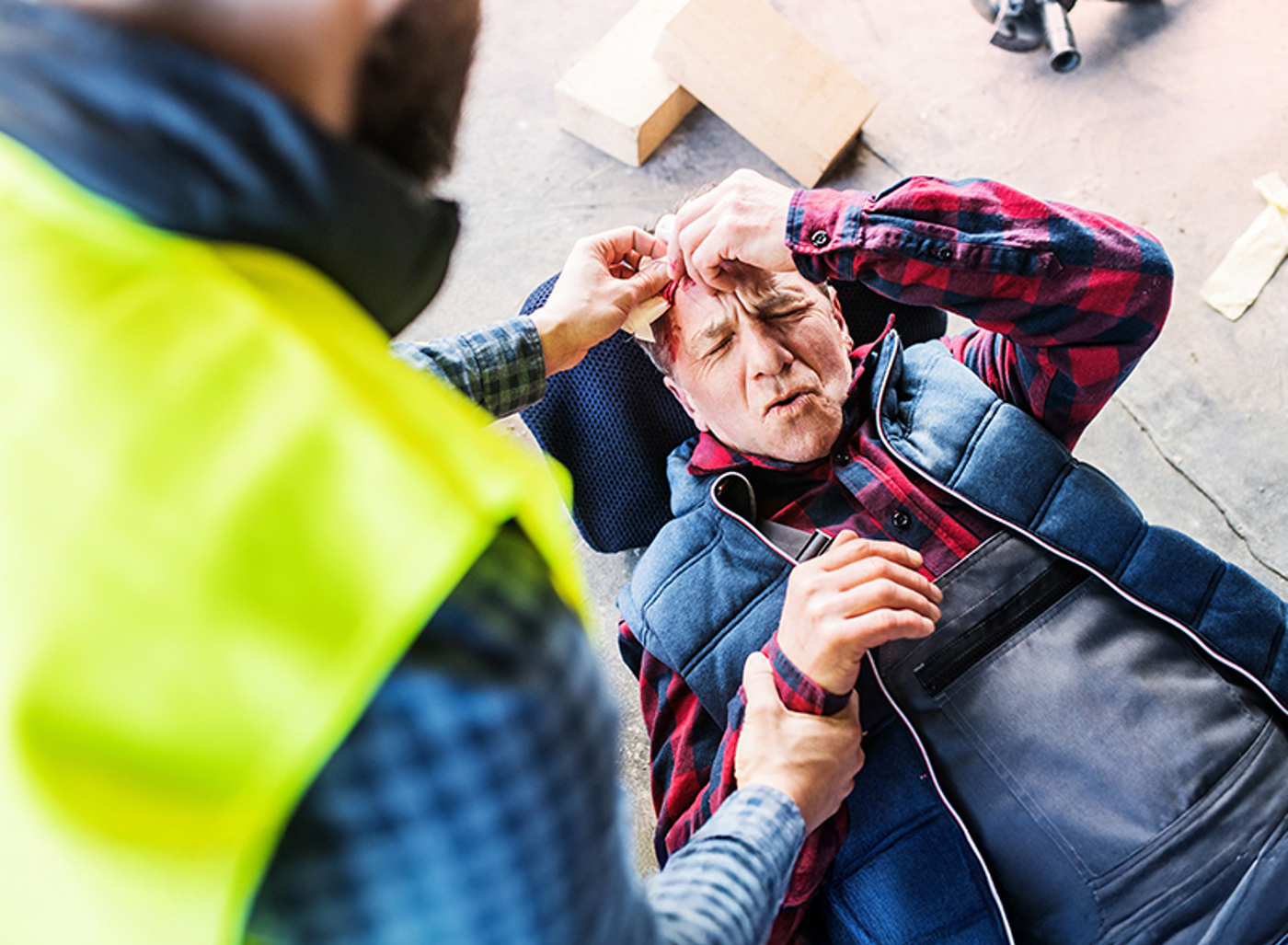
We look at the most common Kiwi construction site injuries and the critical importance of quality First Aid training.
![]()
Construction remains the industry with the highest number of worker injuries in New Zealand. According to the latest ACC data, there were 28,214 claims from the industry in 2024 – the closest being manufacturing with 19,672. Already, there have been 13,159 claims from within Kiwi construction. The majority of injuries are the result of falls, falling objects, or while using power tools. And these causes of injury in the sector have remained consistent over recent years.
Falls and falling objects
These continue to dominate injury statistics in construction, representing the single most dangerous aspect of construction work. Whether from scaffolding, roofs, ladders, or elevated platforms, falls can result in catastrophic injuries including fractures, head trauma, spinal injuries and fatalities. Injuries from falling objects, can cause fatalities, severe head, neck, and shoulder injuries.
Power tool injuries
The widespread use of power tools in construction creates another high-risk category for injury. Cuts, lacerations, and crush injuries from power tools can range from minor wounds requiring basic first aid to severe trauma requiring emergency medical care. The speed and force involved in power tool operations mean that injuries can occur in split seconds, making proper training and immediate response crucial.
Sprains and strains
While less dramatic than falls or tool injuries, sprains and strains are the most common work-related injuries to result in a claim to the ACC across all industries. Construction workers are particularly vulnerable to these due to the physical demands of the job. Heavy lifting, repetitive actions, and awkward working positions contribute to musculoskeletal injuries that can injure and sideline workers for weeks or months.
Other health hazards
Hearing loss is another outcome of unsafe practice in construction. Respiratory problems can also result from the use of hazardous materials such as lead paint, wood and cement dust and solvents. While these may not require immediate first aid response, they can also represent some of the long-term health challenges that construction workers can face.
First Aid training
The importance of immediate medical responses to workplace injuries means First Aid training and implementation are critical – the literal difference between life and death.
There are several organisations providing comprehensive first aid training specifically tailored to the construction industry's unique needs.
Hato Hone St John
This remains New Zealand's leading first aid training provider of workplace first aid training. Their programmes are designed to meet WorkSafe requirements and provide practical skills that can make the difference between a minor incident and a tragedy.
Specialised construction-focused providers
Several training organisations have developed programmes specifically for construction workers. Site Safe First Aid Construction Safety in partnership with Hato Hone St John offer specialist construction safety first aid courses and Health & Safety in Construction Certificate.
Master Builders offers member discounts on accessing first aid training programmes, and New Zealand Certified Builders members can access training through NZCB Learn as well as qualifying for exclusive member benefits to support site safety and success.
Practical Training Solutions has created courses targeted at tradies, whether you are a sole trader, associated with a large construction company, apprentice, or the boss. This recognition that different roles within construction have different training needs represents an evolution in how the industry approaches safety education.
Construction Health and Safety New Zealand (CHASNZ) is an industry-led charitable trust working to improve the lives of construction workers by raising the standard of health, safety and wellbeing in construction.
The CHASNZ Board comprises senior industry leaders, working together to guide best practice health and safety, ensuring it is an intrinsic part of doing better business within the industry.
ACC supports CHASNZ through a partnership agreement which allows CHASNZ to deliver guidance, standards and resources to the over 80,000 small, medium and large constructors and builders.
Other key players in the first aid training space include:
-
First Training offers NZQA-accredited courses that provide first aid training in what they describe as ‘a fun and interactive environment, for the workplace, outdoors, schools or as a life skill’.
-
New Zealand Red Cross provides first aid courses to give life-saving skills with a focus on practical application.
-
MediTrain offering nationwide Workplace and Childcare First Aid courses approved by NZQA, WorkSafe New Zealand, and the Ministry of Education
Building a safer industry
The construction industry's injury statistics remain too high, with any fatality or injury being too many. The statistics on ACC injury claims in construction in 2024 were lower than 2023, however, down to 28,214 from 32,017, so improvement is being shown. The more companies utilising proactive safety measures and metrics like health and safety audits, risk assessments, and inspections to monitor and improve their safety management systems the better. And investing in comprehensive first aid training from quality providers, ensuring training is up-to-date and implemented effectively, and that a culture of safety is established, will help to create more momentum in the right direction to propel the industry towards a safer future.